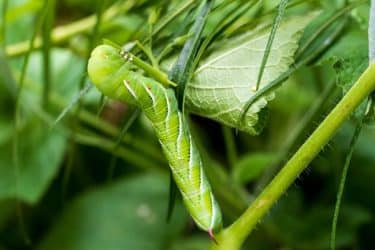Every time you burn your fingers with a hot teapot, your spinal cord rapidly withdraws your hand before you can understand what was the matter – and before you experience an emotionally loaded, unpleasant sense of tissue damage that you call pain.
This example of a simple reflex illustrates a usually omitted fact: nociception, which means the ability to sense the actual damaging stimulus by nerve endings, is not yet pain. Pain is a much more complex experience. In this example, nociception results in a defensive action before pain arises in your brain.
In humans, pain has cognitive and emotional components, but the study of its mechanisms are ongoing. These studies are extremely important – to date, the most potent painkillers are the ones that act on the gatekeeping mechanism of pain regulation. They would be excellent applications of our knowledge about the higher levels of pain formation, if it weren’t for the fact that these medications are opioids – dangerous drugs with the risk of side effects and dependency.
Some intriguing phenomena of human physiology give us some clues of pain mechanisms. First of all, “descending control” remains the most characteristic and most mysterious pain feature. Stories are widely circulated about heavily injured soldiers who continued dispatching a mission and felt no pain until a battle was over. This is an example of the working gatekeeping mechanism mentioned above – a neuronal filter in the spinal cord, regulated from the deepest brain structures located around the brain ventricles. The key mediators of these mechanisms are endogenous opioids, for example endorphins, which determine our perilous sensitivity to exogenous opioids like morphine.
A kind of reverse phenomenon is called “neuropathic sensitisation”, often clinically described as allodynia. In this case, non-noxious stimuli are perceived as painful – very often, the trigger of this condition is real damage.

Recently, both phenomena were described in insects: a review from a group led by Lars Chittka (a professor at Queen Mary University of London, and author of the book The Mind of a Bee) highlighted the possible existence of downstream pain control in the fruit fly Drosophila melanogaster and the larva of tobacco hawkmoth Manduca sexta.
Meanwhile, their Australian colleagues managed to induce allodynia in Drosophila via injury. These papers elicited a wave of headlines in science media. “There’s Growing Evidence That Insects Feel Pain, Just Like Us”, ScienceAlert writes. “Put Down That Flyswatter: Insects Feel Pain Too”, Technology Network warns.
In a new research, Chittka’s group found that bumblebees groom their own antennae if injured by hot iron – this might be misinterpreted as evidence of pain in bumblebees, however that conclusion is not quite consistent with the study. “The logic is that there are lots of claims in the literature that such grooming does not exist in insects, and people have taken this as positive evidence that insects cannot possibly feel pain”, Chittka explained, “However, no one bothered to test this. So, while this new observation is not proof of pain, it is proof that one of the key claims against pain in insects is demonstrably incorrect”.

Other pieces of evidence must be also treated with caution. Even if we look at the criteria of pain-perceiving ability, it will appear that insects pass only a subset of them (as far as we know from the currently available papers). The most comprehensive set of criteria was firstly developed by Prof. Jonathan Birch (London School of Economics and Political Science) and subsequently implemented for insects by the same team, led by Lars Chittka.
It specifies:
- Presence of nociceptors
- Presence of integrative brain regions
- Connection between nociceptors and integrative brain regions
- Possibility of pharmacological analgesia
- Motivational trade-offs of noxious stimuli
- Flexible self-protecting behaviour
- Associative learning when presented with noxious stimuli
- Preference of analgesic drugs.
Downstream pain control and self-grooming after injury could meet, at most, two or three of these criteria, even if we pool the data obtained in different species (strictly speaking, the possibility of insect-to-insect extrapolation requires extra proofs). Moreover, these criteria are only structural and behavioral prerequisites for pain, sine qua non for suffering. But they cannot warrant the presence of pain. Behavioral pain-like reactions like self-grooming can be observed in brainless (spinal) frogs whose pain centers are cut away. They are just simple and rough movements, but such a reflex is technically possible. No one can be sure that self-grooming in insects is not a reflex – just a more complex reflex, involving several structures of their nervous system. Neuroanatomical criteria are much less reliable – wiring between brain centers says nothing about the signals and sensations transmitted by it.
In 1974, philosopher Thomas Nagel wrote an article that created an everlasting basis for skepticism in studying animal perception and cognition. In the article “What Ιs Ιt Like to Βe a Βat?“, he suggests the mental experiment of trying to imagine how a bat perceives echolocation signals. After a long philosophical discussion, he concludes that we have no way to understand or describe it – a bat’s experience is so dissimilar from ours, that we have no terms, words or other references to describe it.
This mental experiment has led to a conclusion that we have no clue what another creature feels and experiences – and this inability includes pain, too. We have no way to objectively measure or prove the level of pain not only in another animal, but even in another human. According to Chittka, “For example, if I say that I had an awful headache last week, you have no way to check this or prove this wrong. It is a problem for insurance companies – for example, if a client said that they were in severe pain from an injury after a car accident, they cannot disprove it”.
Even doctors are forced to rely on patient’s complaints and self-scores in prescribing painkillers (veterinarian doctors use a cat’s grimace in a similar manner). We have no way to precisely diagnose the patient’s pain level – so don’t even ask about insects.
So, what is left for scientists to do? Our fundamental inability to understand the senses of another living thing is not a reason to give up. All of the evidence and criteria, discussed above, enables scientists to draw probabilistic conclusions. For such conclusions, any signs of flexibility in the perception of noxious stimuli are useful – from allodynia to self-grooming. They allow us to evaluate the plausibility of a complex integration of nociceptive information in insects. Maybe, their way of integrating such information is dissimilar from the distressful experience we call “pain” – but the question of its existence is a good research objective itself.
“We can only discuss this problem in the terms of probability and state that an insect has something more than a simple nociception”, Chittka explains. But we can only guess how this “something more” could look.
In the book “An Immense World: How Animal Senses Reveal the Hidden Realms Around Us“, Ed Yong cites the example of a squid that exhibits defensive reactions but never grooms a damaged tentacle. Yong characterises this behavior in this way: “Injured squid behave as if their entire bodies were sore”. This is an insight into how different this “something more” can be – but there’s a catch: indeed, we cannot understand what it is like to be a squid. Just as we cannot understand what it is like to be a bee.



